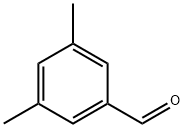1,3,5-Benzenetricarboxylic acid chloride
Synonym(s):Benzene-1,3,5-tricarbonyl chloride;Trimesic acid trichloride;Trimesoyl chloride
- CAS NO.:4422-95-1
- Empirical Formula: C9H3Cl3O3
- Molecular Weight: 265.48
- MDL number: MFCD00000679
- EINECS: 224-594-8
- SAFETY DATA SHEET (SDS)
- Update Date: 2025-09-25 17:15:13

What is 1,3,5-Benzenetricarboxylic acid chloride?
Chemical properties
clear yellow liquid after melting
The Uses of 1,3,5-Benzenetricarboxylic acid chloride
Specialty organic.
The Uses of 1,3,5-Benzenetricarboxylic acid chloride
1,3,5-Benzenetricarbonyl trichloride was used in the synthesis of chiral azoaromatic dendrimeric systems. It was used to study the structure of activated composite membranes containing organophosphorus extractants as carriers. It was the starting material for two tritopic amides derived from 3- and 4-methylaminopyridine which self-assembled into nanoballs on treatment with palladium(II) nitrate in DMSO.
What are the applications of Application
1,3,5-Benzenetricarbonyl trichloride is a versatile aromatic acid halide reagent
General Description
1,3,5-Benzenetricarbonyl trichloride reacts with propargyl alcohol to yield triprop-2-ynyl benzene-1,3,5-tricarboxylate.
Properties of 1,3,5-Benzenetricarboxylic acid chloride
| Melting point: | 32-38 °C (lit.) |
| Boiling point: | 180 °C/16 mmHg (lit.) |
| Density | 1.487 g/mL at 25 °C (lit.) |
| refractive index | 1.5945-1.5965 |
| Flash point: | >230 °F |
| storage temp. | Store below +30°C. |
| solubility | decomposes |
| form | Liquid |
| color | Clear colorless to slightly yellow |
| Water Solubility | decomposes |
| Sensitive | Moisture Sensitive |
| BRN | 2940936 |
| CAS DataBase Reference | 4422-95-1(CAS DataBase Reference) |
| NIST Chemistry Reference | 1,3,5-Benzenetricarbonyl trichloride(4422-95-1) |
| EPA Substance Registry System | 1,3,5-Benzenetricarbonyl trichloride (4422-95-1) |
Safety information for 1,3,5-Benzenetricarboxylic acid chloride
| Signal word | Danger |
| Pictogram(s) |
 Corrosion Corrosives GHS05 |
| GHS Hazard Statements |
H314:Skin corrosion/irritation |
| Precautionary Statement Codes |
P260:Do not breathe dust/fume/gas/mist/vapours/spray. P280:Wear protective gloves/protective clothing/eye protection/face protection. P301+P330+P331:IF SWALLOWED: Rinse mouth. Do NOT induce vomiting. P303+P361+P353:IF ON SKIN (or hair): Remove/Take off Immediately all contaminated clothing. Rinse SKIN with water/shower. P305+P351+P338:IF IN EYES: Rinse cautiously with water for several minutes. Remove contact lenses, if present and easy to do. Continuerinsing. |
Computed Descriptors for 1,3,5-Benzenetricarboxylic acid chloride
New Products
4,4-Difluoropiperidine hydrochloride tert-butyl 9-methoxy-3-azaspiro[5.5]undecane-3-carboxylate Indole Methyl Resin N-Isopropylurea N,N-Dicyclohexylcarbodiimide(DCC) MELDRUMS ACID 5-METHYLISOXAZOLE-4-CARBOXYLIC ACID Magnessium Bis glycinate Zinc ascorbate 1-bromo-2-butyne 2-acetamidophenol 9(10H)-anthracenone Erythrosin B, 4-Piperidinopiperidine 2-((4-morpholinophenylamino) (methylthio) methylene) malononitrile 2,4-dihydroxybenzaldehyde 3-(4-morpholinophenylamino)-5-amino-1H-pyrazole-4-carbonitrile Methyl 2-methylquinoline-6-carboxylate 2,6-dichloro-4-nitropyridine 4-Bromo-2-chlorobenzonitrile 2-(benzylamino)acetic acid hydrochloride 4-(tert-Butoxycarbonylamino)but- 2-ynoic acid 3,4-dihydro-2H-benzo[b][1,4]dioxepine 1-Phenyl-1-cycloprppanecarboxylicacidRelated products of tetrahydrofuran








You may like
-
 4422-95-1 1,3,5-Benzenetricarbonyl trichloride 97%View Details
4422-95-1 1,3,5-Benzenetricarbonyl trichloride 97%View Details
4422-95-1 -
 4422-95-1 98%View Details
4422-95-1 98%View Details
4422-95-1 -
 1,3,5-Benzenetricarbonyl Trichloride CAS 4422-95-1View Details
1,3,5-Benzenetricarbonyl Trichloride CAS 4422-95-1View Details
4422-95-1 -
 1,3,5-Benzenetricarbonyl trichloride, 98% CAS 4422-95-1View Details
1,3,5-Benzenetricarbonyl trichloride, 98% CAS 4422-95-1View Details
4422-95-1 -
 1,3,5-Benzenetricarbonyl chloride CAS 4422-95-1View Details
1,3,5-Benzenetricarbonyl chloride CAS 4422-95-1View Details
4422-95-1 -
 Trimesoyl chloride 95% CAS 4422-95-1View Details
Trimesoyl chloride 95% CAS 4422-95-1View Details
4422-95-1 -
 1,3,5-Benzenetricarbonyl trichloride CAS 4422-95-1View Details
1,3,5-Benzenetricarbonyl trichloride CAS 4422-95-1View Details
4422-95-1 -
 99% 1,3,5-Benzenetricarbonyl Trichloride (working standard), Analytical GradeView Details
99% 1,3,5-Benzenetricarbonyl Trichloride (working standard), Analytical GradeView Details
4422-95-1
Statement: All products displayed on this website are only used for non medical purposes such as industrial applications or scientific research, and cannot be used for clinical diagnosis or treatment of humans or animals. They are not medicinal or edible.
